Last Updated on November 27, 2025 by JonnaJ | Published: December 16, 2019
Like any other country, Italy has its own Christmas traditions that go back centuries. More than just pasta and pizza, Italian Christmas foods are uniquely distinguished by their variety, richness, and seasonality.
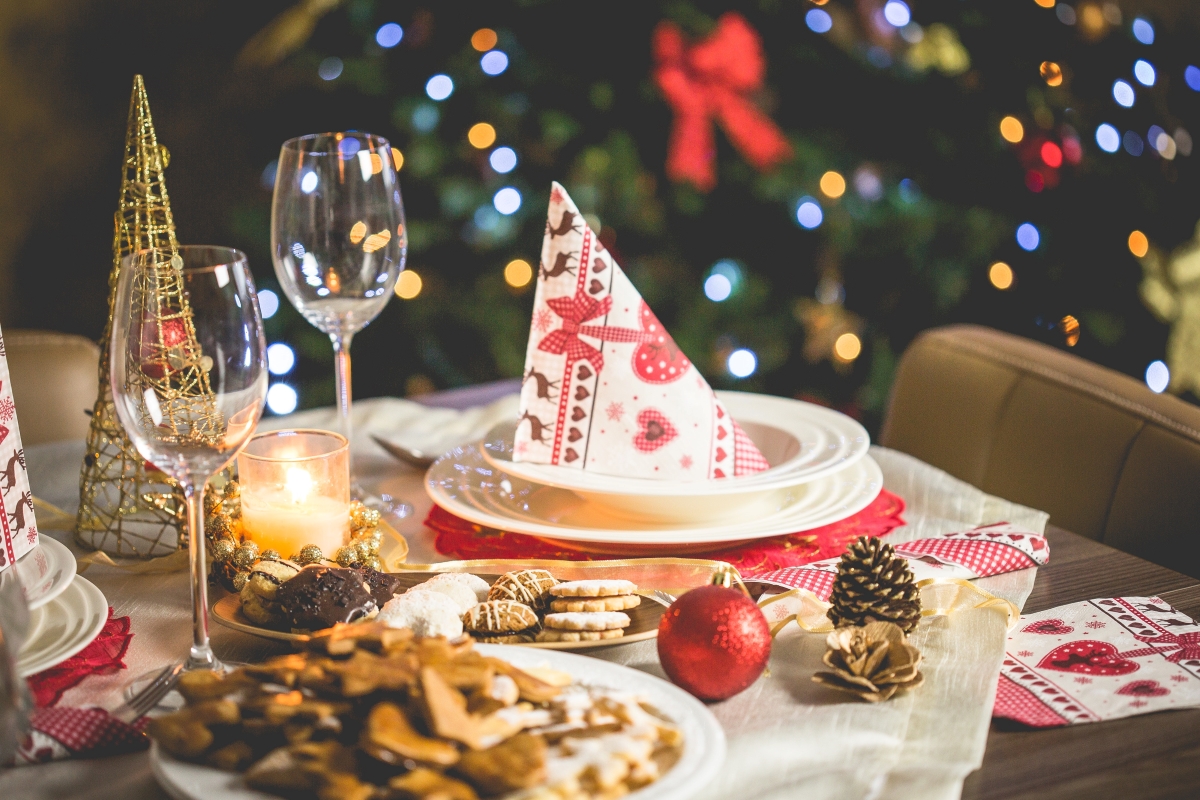
Christmas in Italy is a time for abbondanza, literally, “abundance.” Italians sit down for long – we’re talking six or seven hours – feasts of many courses, even more extreme than on Easter or other holidays. What they eat depends on the region, as well as on the family, as Christmas is also the holiday for which every family has its own recipes and traditions.
No matter which region of Italy you’re traveling to this holiday season, we’ve put together a little guide of quintessential dishes and desserts of typical Italian Christmas foods.
Typical Italian Christmas Foods
Italian Christmas celebrations feature a delicious variety of regional specialties that highlight the country’s rich culinary traditions. Common dishes include antipasti, such as cured meats and cheeses, pasta dishes like lasagna or tortellini in broth, and hearty main courses, like roasted meats or fish. Popular sweets include panettone, pandoro, and torrone, often enjoyed with a glass of dessert wine. While each region has its own signature dishes, the focus everywhere is on sharing generous, home-cooked meals with family and friends.
La Vigilia di Natale (Christmas Eve) Foods
Fish and seafood
Catholic tradition prohibits the consumption of meat on the evenings before religious holidays. Most Italians, therefore, eat a fishy feast on Christmas Eve. If you go to a fishmonger on the morning of the 24th in any Italian city, you’ll see hundreds of plastic bags on ice, each one with someone’s surname on the outside and a dozen species of fish on the inside.
The emphasis is on freshness and variety, both of seafood type and cooking method. And, of course, the specific seafood and dishes vary by region. One might begin with a frittura di pesce (fried fish), which could include calamari, baby octopus, or paranza (mixed tiny fish). In the north of Italy, you’ll definitely find baccalà (salt cod), and further south, capitone (eel).
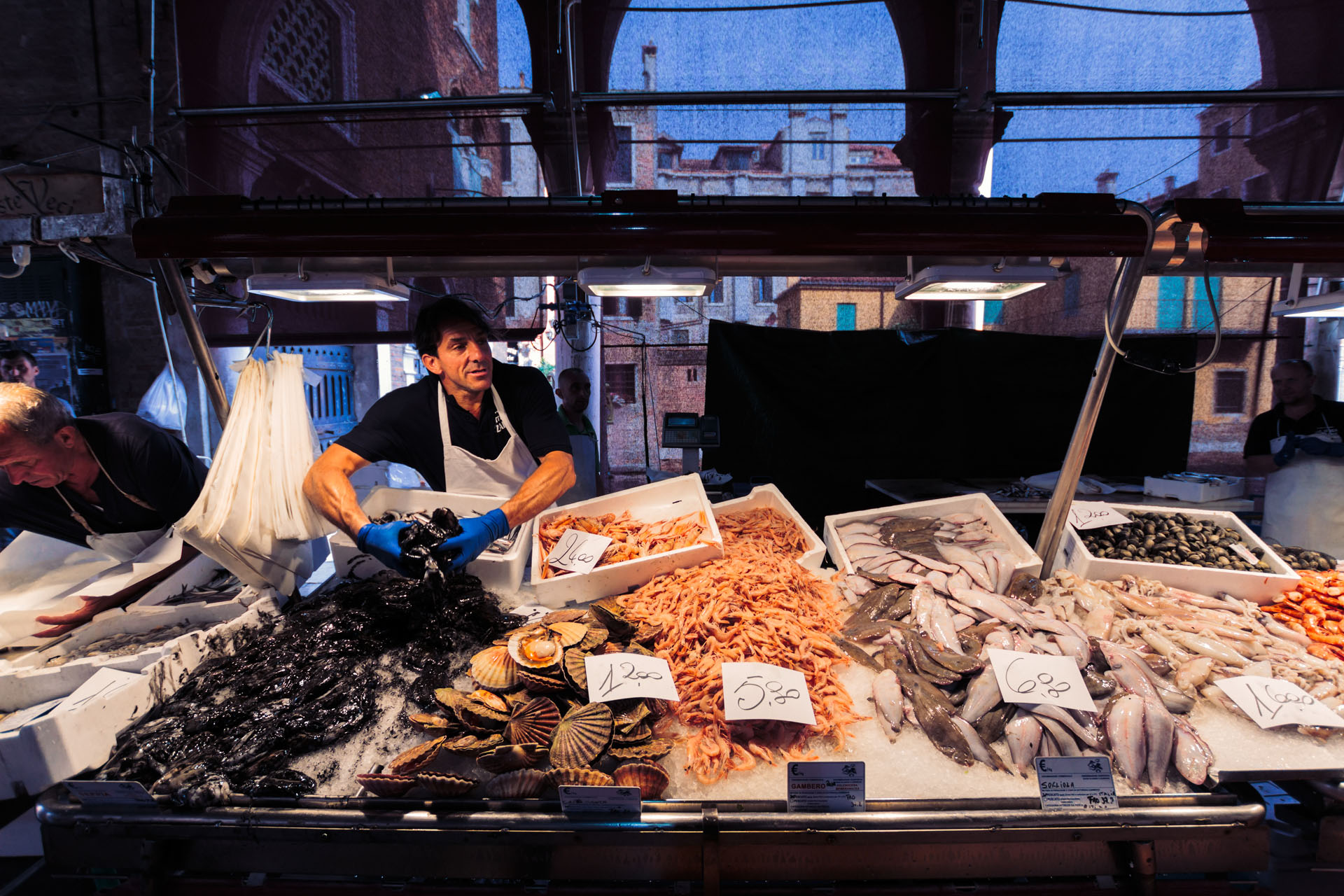
Pasta, potatoes, and pastries
Of course, we couldn’t speak of Italian Christmas foods without mentioning pasta. Linguine with lobster, spaghetti with clams, paccheri ai frutti di mare (short pasta with mixed seafood)…you name it. Whole roasted fish with potatoes is often served as a secondo, and Christmas cookies often appear before the midnight mass.
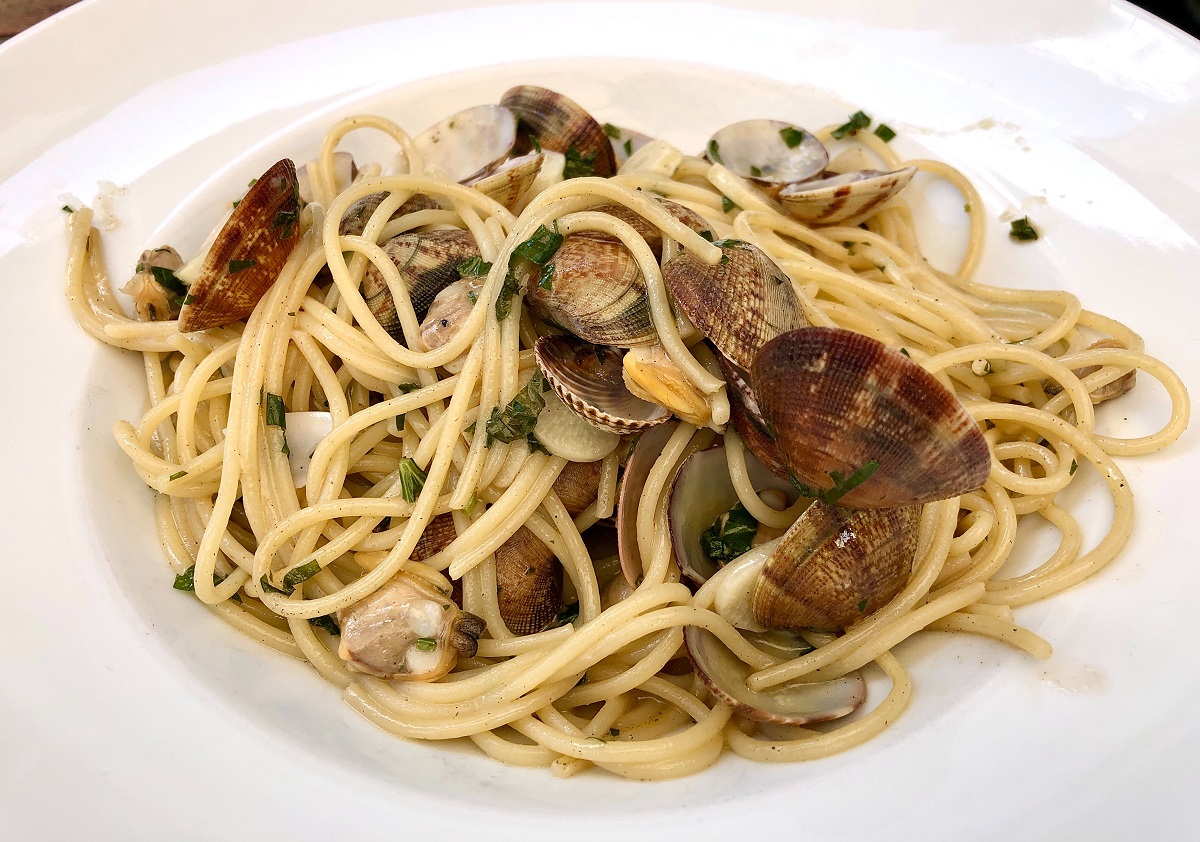
Insider’s Tip: The “Feast of the Seven Fishes” is an Italian-American tradition in which families eat seven types of fish on Christmas Eve. It is not typically found in Italian families (even though they may eat seven or more types of fish.)
Natale (Christmas) Foods
Historically, especially in southern Italy, Christmas was one of the few days of the year where poor people could eat rich, expensive dishes made with meat, sugar, and exotic spices. The motives may have changed, but the tradition hasn’t, and most Italians sit down for a table-splintering, gut-busting, wallet-shredding Christmas lunch that could be a dozen or more courses.
Antipasti
The antipasti almost always include cured meats and cheeses. Many regions, in fact, have special “Christmas salamis,” which are meant to be cured until the holidays. More elaborate dishes are also common, like vitello tonnato (cold roast veal with a tuna-spiked mayonnaise sauce), or infinite variations on frittata.
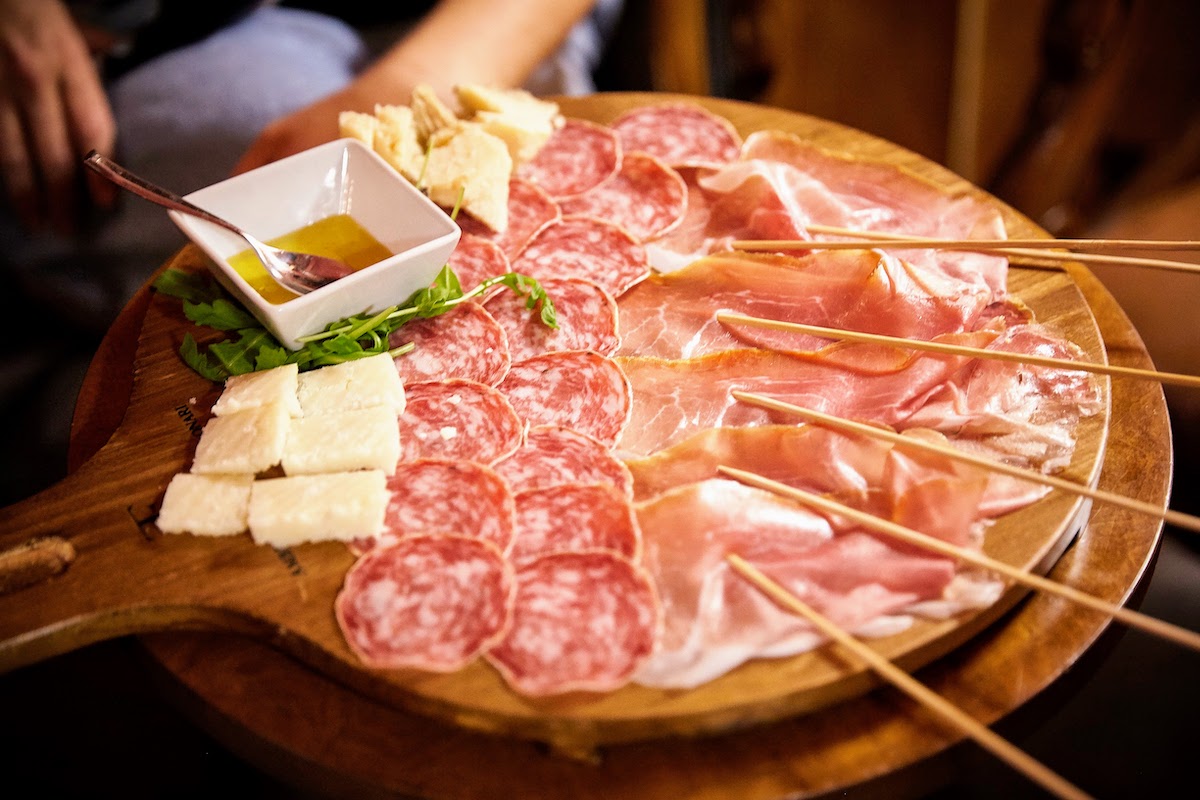
Tortellini in brodo, pasta al forno, ragù…
Traditional Italian Christmas foods often mean kicking off with delicious home-made pasta, often several courses of it. Christmas pasta almost always has some sort of meat in it. Throughout Italy, but especially on tables in Emilia-Romagna, one finds the incomparable tortellini in brodo—meat-stuffed circles in a golden broth of beef and capon.
In the south of Italy, there’s pasta al forno, or baked pasta. A true “everything but the kitchen sink” celebration of abundance, pasta al forno might have long-simmered ragù, fried tiny meatballs, salami, hard-boiled eggs, chunks of cheese and a rich bechamel sauce, all baked together until the top is crisp and the inside gooey and impossibly rich.
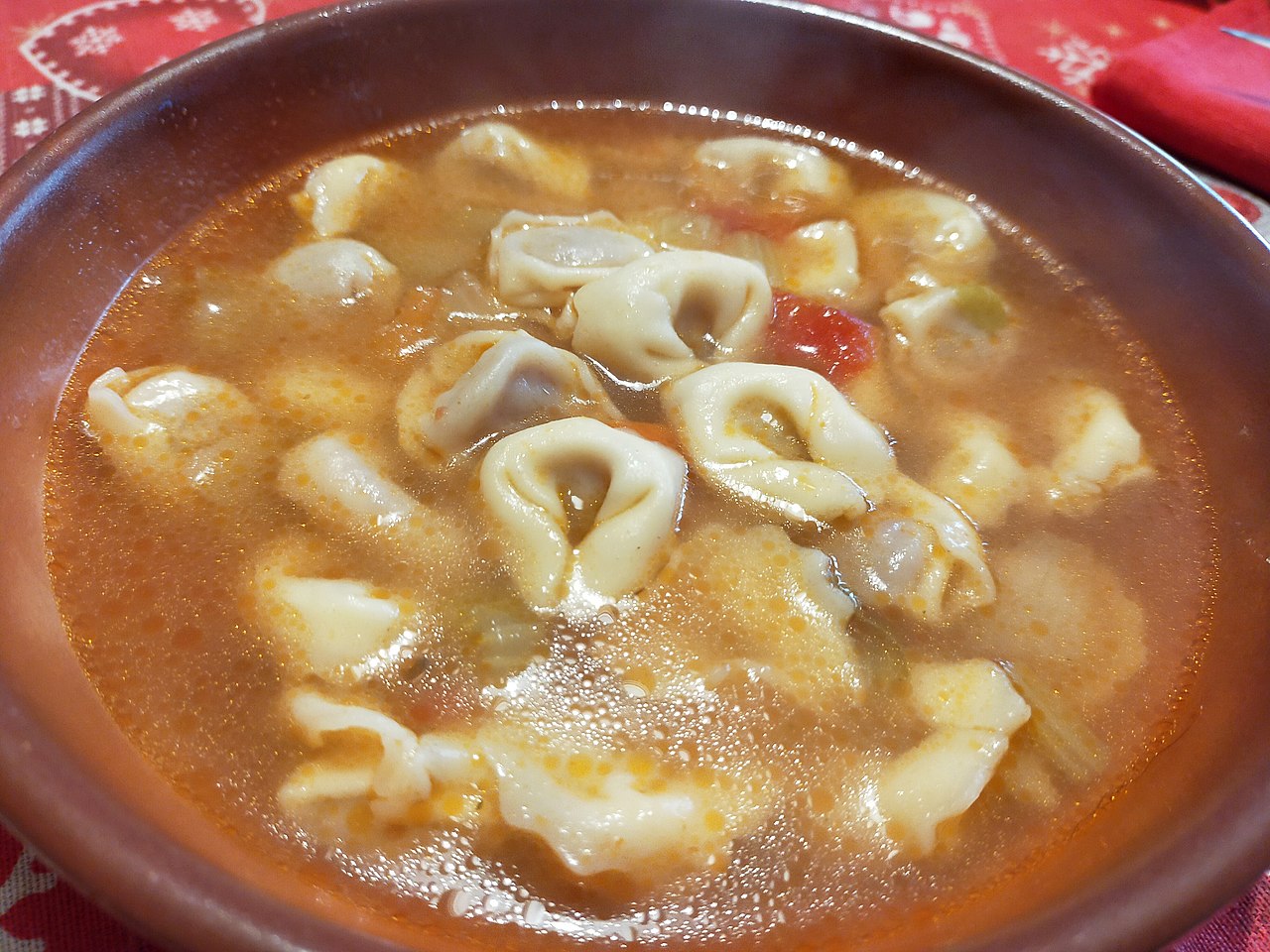
Hearty meat dishes
We’re not finished. Normal Italian meals usually don’t include much meat—maybe a sausage, or a thin cutlet. Christmas is an exception. When it comes to traditional Italian Christmas foods, many families eat multiple carnivorous courses. From the tortellini broth, there’s succulent boiled meat, called bollito, traditionally served with salsa verde (piquant green sauce) or mostarda (candied fruit in spiced syrup). Some type of roast is very common, like roast baby lamb in Rome, or a baroque faraona ripena (guinea fowl stuffed with ground meat and spices). And even after that, some families will have grilled sausages and chops.
Meat dishes are a typical second course when it comes to traditional Christmas foods.
Panettone and pandoro
And, of course, when talking about Italian Christmas foods, we can’t leave out the desserts. We don’t have the space to delve into the hundreds of traditional Italian Christmas sweets, but the two most common are panettone and pandoro. Both are sweet, bread-like cakes, boxes of which can be found stacked high in shops in the weeks before Christmas. The former originates in Milan, and is a fluffy cake, shaped a bit like an oversized muffin, dotted with dried fruit and raisins. The latter (literally, “golden bread”) is from Verona, star-shaped, with a moister, denser texture, usually served with powdered sugar.
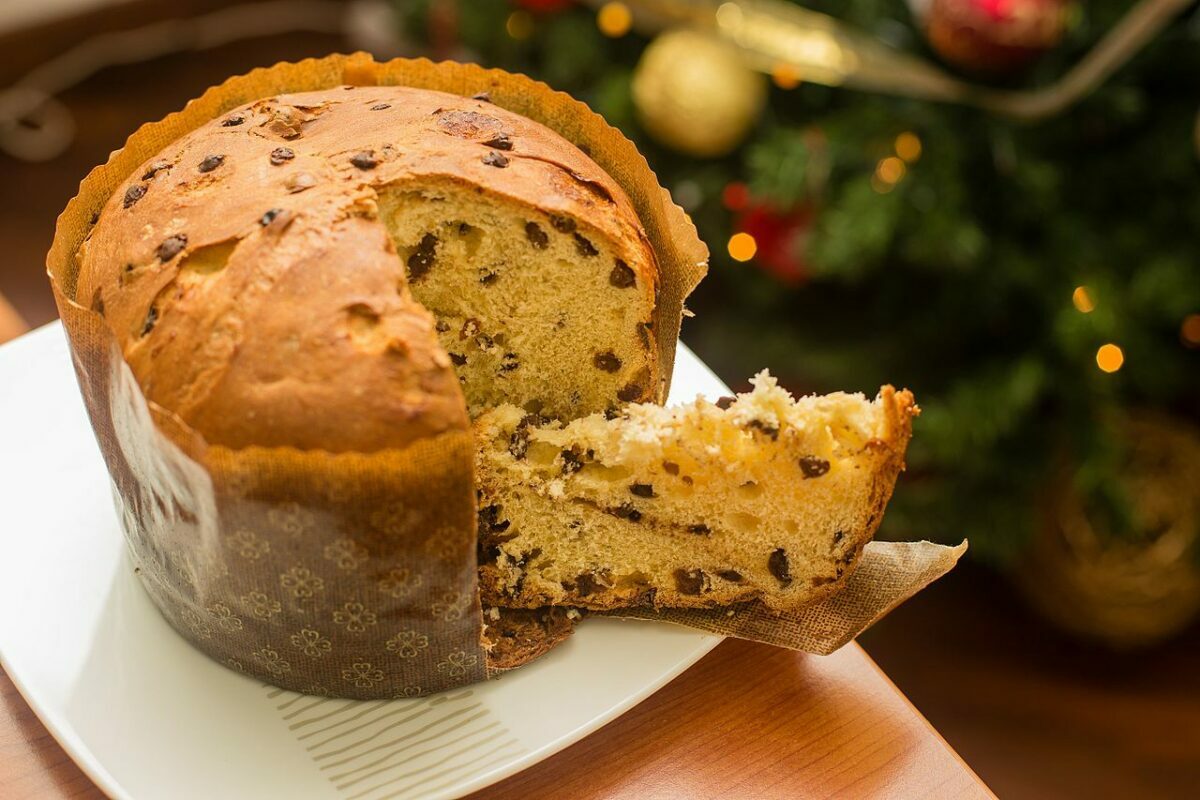
Il Giorno di Santo Stefano (Boxing Day) Foods
You’d think that after the marathon of eating so many Italian Christmas foods on Christmas Day, Italians would use the following day to relax by themselves and have a nice lunch of raw fruit and Alka-Seltzer. Nope. Saint Stephen’s Day often involves yet another family lunch, maybe not as big as the previous days’, but a serious lunch nonetheless.
Avanzi (Leftovers)
On the 26th, many Italians show off their prowess with avanzi, the leftovers from the previous day. We’re not talking about reheating in a microwave, though. The remaining food from Christmas lunch is reworked, repurposed and re-enriched. Leftover pasta will get mixed with eggs and cheese to make a frittata di pasta. Boiled meat will be shredded and stewed with tomatoes and vegetables. The leftover cured meats and desserts from the previous day will be put out to round the meal, because more than enough will have been bought for Christmas.
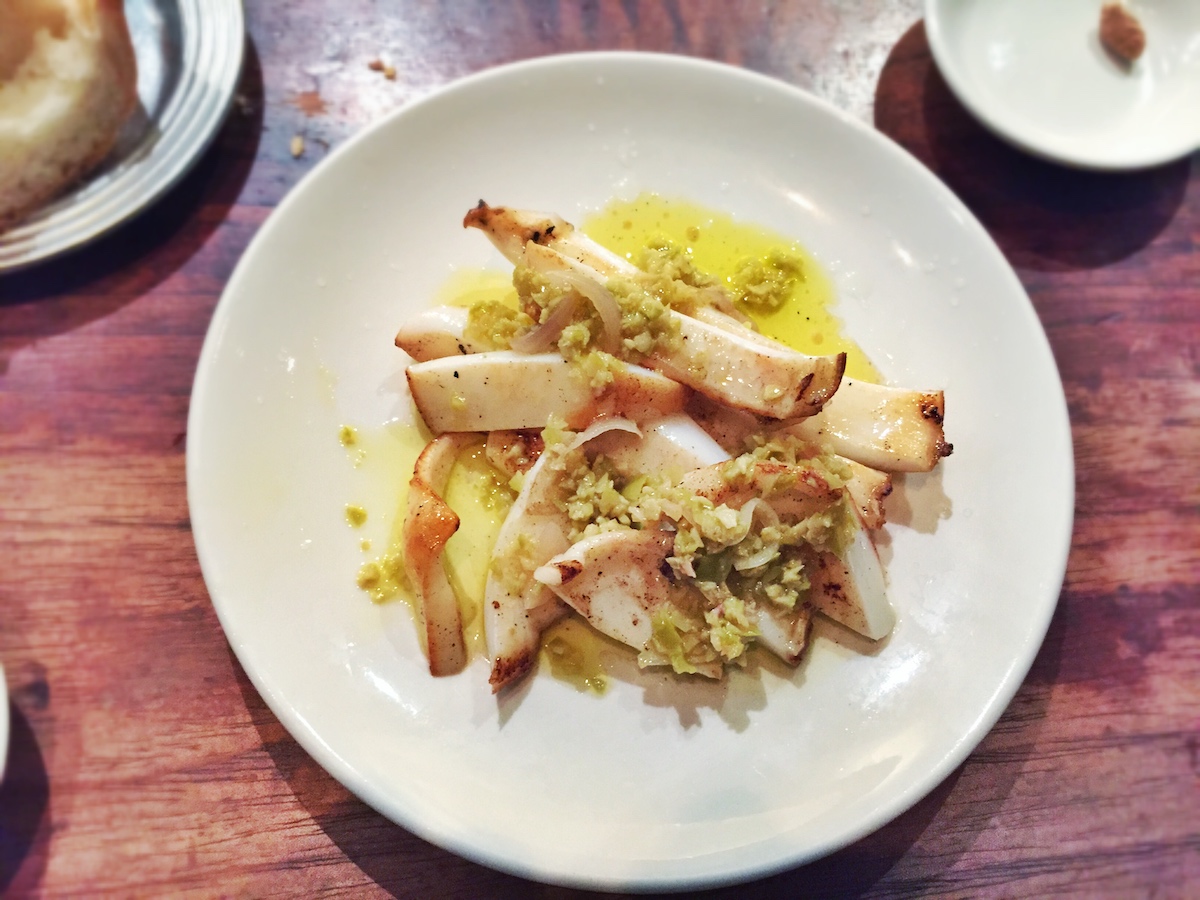
Crespelle and other sweets
Along with leftovers, some families also have new dishes for the day after Christmas. My friend Mario, from Calabria, always has leftover broth with pasta and leftover boiled beef, but then makes grilled sausages and broccoli rabe as a second course, and in the evening, crespelle—fried dough that can be stuffed with cheese or rolled in sugar.
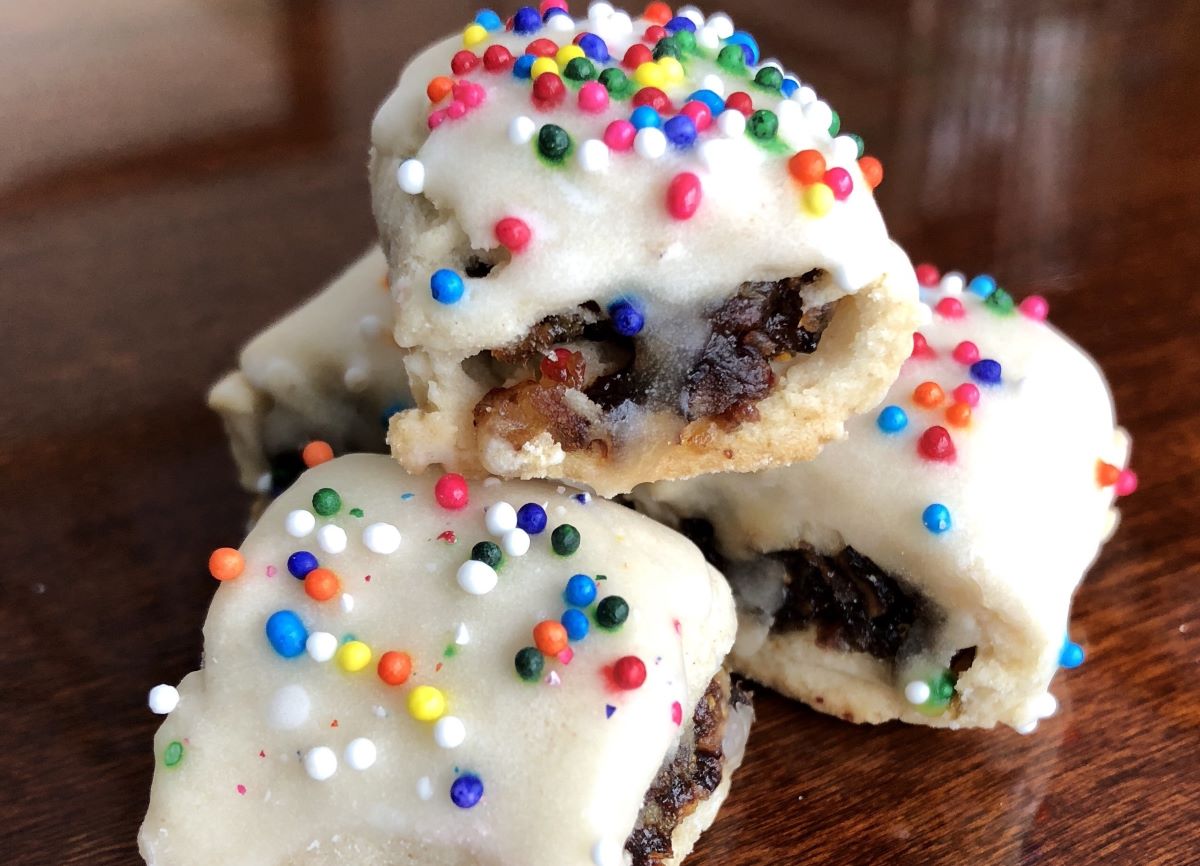
Italian Christmas Food FAQs
What do Italians drink at Christmas?
Well, you always have the typical mulled wine, which in Italian is “vin brulé”. Negroni is a also classic Italian holiday cocktail, and, of course, it wouldn’t be Christmas dinner without a cold glass of Prosecco or Asti Spumante. After dinner, stuffed family members like to settle in with a nice glass of caffè corretto (a shot of espresso with a small dash of liquor, usually grappa) or even the Italian version of eggnog, called bombardino.
What is a good Italian delicacy to give as a gift during the holidays?
Well, there are quite a few typical Italian products that make for delicious gifts. You could go the sweet-treat route with a yummy pandoro or a panettone or even a box of delicious biscotti or cioccolato (chocolates). Then you always have the crowd favorite of Italian wine, liquors, or digestifs such as limoncello, Amaretto di Saronno, Campari, Sambuca, and Aperol. For home cooks, bottles of quality olive oil or Modena balsamic vinegar is always a good bet.
What is a traditional Italian Christmas dinner?
A traditional Italian Christmas dinner often features roasted meats like lamb or veal, pasta such as lasagna or tortellini, and desserts like panettone or pandoro.
What is a traditional Italian Christmas Eve dinner?
Christmas Eve in Italy is typically meat-free, centered on seafood dishes like fried fish, clams with pasta, and baccalà (salted cod), followed by light desserts and wine. La Vigilia is traditionally a meat-free evening rooted in Catholic custom.
What are the most iconic foods served in Italy at Christmas?
Italian Christmas tables often feature roast meats, stuffed pasta like tortellini in broth, panettone, pandoro, and regional sweets such as struffoli or panforte.
How do Christmas meals differ region to region across Italy?
Northern Italy favors stuffed pastas and buttery desserts, central regions enjoy roasts and savory pies, and the south highlights seafood, sweets, and citrus flavors.
Can I sample these traditional Italian Christmas foods on a Devour Tours Italy experience?
Yes. Devour Tours Italy features regional specialties, and guides often highlight local Christmas traditions and seasonal bites.
Are the tastings on a Devour Tours food walk in Italy adjusted for seasonal or holiday specialties?
Yes. Tastings can include seasonal treats such as panettone, festive pastries, or winter comfort dishes depending on availability.
What should I know (dietary / walking / logistics) when joining a food tour in Italy during the holiday season?
To prepare for a food tour, wear warm layers and comfortable shoes, expect moderate walking, and share any dietary needs ahead of time. Holiday hours may affect some stops, but tours always offer generous tastings and cultural insights.
Now that we’ve covered Italian Christmas foods, are you hungry for more insights into Italian culture? Why not check out our amazing food tours in Italy, a great way to work up an appetite on your visit!

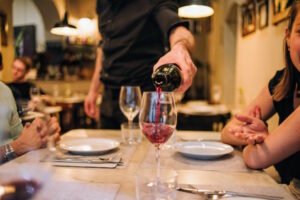
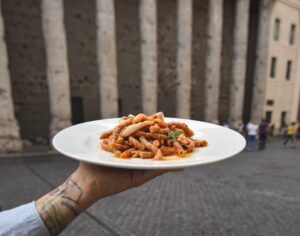






ONLY “CAMPAR!!” 🙂
To each his own 😀
Think I’ll do some cooking!!!